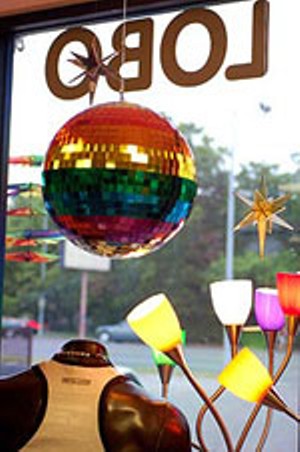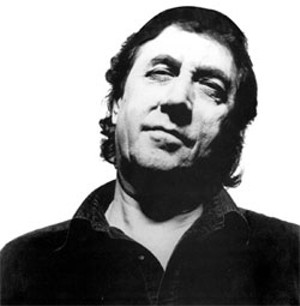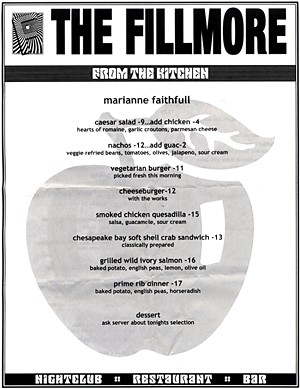Fog poured over the Berkeley hills like a waterfall as I drove through the Caldecott Tunnel last Saturday night. I took this as the best possible omen. Having
grown up in the Bay area, I still get a certain …
tingle from fog. You never know what’ll materialize out of it. By the time I was crossing the Bay Bridge, you could barely make out the San Francisco skyline. Ho, boy. Marianne Faithfull floated in there somewhere.
The Fillmore isn’t just another club. It’s perhaps the Great pyramid of live music venues. Save for the Beatles and Stones, the Fillmore birthed the big bang of Sixties emancipation. All of it, from Jimi Hendrix to Miles Davis. And there it still sits, on the corner of Geary and Fillmore. To walk up into the Fillmore is to enter the antechamber of Kings.
The tub of free apples remains at the top of the stairs inside, sometimes green, tonight red. Hippies got hungry back when tickets cost $8. (Tonight: $100 for two.) Pictures from rock & roll’s family album cover the walls floor to ceiling: Janis Joplin, the Who, and St. Jerry Garcia of the Second Staircase. Up another flight, the inner sanctum awaits. The Palace of the Legion of Honor, in the shadow of the Golden Gate Bridge further north, could house just such a hallowed room the same way the Metropolitan Museum of Art in NYC houses an entire Egyptian temple.
With a low, unceasing lysergic pulse, a first run of framed Fillmore posters covers every inch of the dining room’s sky-high walls. (More contemporary works finish out the back half of the hall.) The S.F. MoMa owns a series set, as should the Musée D’Orsay in Paris. These aren’t just telephone pole snags from 35, 40 years ago. The mind-expanding images of Wes Wilson, Bonnie MacLean, Lee Conklin, and the flying eyeball himself, Rick Griffin, are a singular movement in 20th century modern art, no less than the music screaming from their firework visuals. One stands in that room in humbled awe.











